
Despite signs of economic recovery, consumers continue to penny pinch. That was the finding of the Mintel British Lifestyles Report 2015 this month.
The British economy grew 2.6% in 2014, the fastest rate of growth since 2007, it pointed out. Unemployment fell from its peak of 8.4% in 2011 to 7.3% in the third quarter and - perhaps most crucially - wages began to outpace inflation. And yet consumers remained reluctant to splash out, the report concluded. So the question has to be: why?
Around a third of consumers surveyed felt they had cut spending on eating out, leisure, and alcohol in 2014 compared with the year before, a trend across all sectors with the sole exception of in-home food.
Even there, however, just 17% felt they had increased spend compared with 14% cutting back. The overall picture is of sluggish growth at best - of thrifty consumer spending by the “battle-scarred” shoppers described by Asda CEO Andy Clarke in April, financially better off (with disposable income up 10.1% according to Asda’s tracker) but choosing to save extra pennies for a rainy day.
How accurate is this depiction of consumer spending? What is holding them back? And what does this mean for grocery?
A broader look at actual spend data suggests the post-recession British consumer may not be quite so reluctant to part with their cash as first thought.
Data from ONS for April this year suggests a far more buoyant retail sector. Overall value sales across food and non-food were up 1.8%, and volume sales were up 4.7%. Within that are some real success stories. Purchases of household goods jumped by 10.3% in value terms in the same time period, closely followed by clothing at 8.7%.
The same can’t be said for grocery, however, with spending in food stores the worst performing of the categories looked at by ONS other than fuel (which has experienced the longest-running price decline for two decades). There was in fact a 1.4% drop in value sales for food stores and a tiny 0.2% growth in volume.
This all suggests, says CEBR economist Sam Alderson, that consumers may be penny pinching on grocery in order to spend elsewhere.
Alastair Lockhart, head of insight at Savvy Marketing, argues consumers now think in terms of debit and credit. “What shoppers are telling us is that they plan to increase spending on things like clothing, holidays and home improvements. Money they can save on things they know they’ll be buying anyway, like food, is being diverted into other areas of retail,” he says.
Consumers carefully cutting spend on essentials to purchase treats elsewhere would suggest they will continue to struggle. Barclaycard CEO Valerie Soranno Keating warned the positive picture painted by the bank’s latest data (growth of 4.2% in overall consumer expenditure in May) did not alter the fact most consumers continue to exercise fiscal prudence with “a desire to balance the budget and an ongoing search for value”.
Wider economic factors are also playing a role in this value-conscious outlook, says Ina Mitskavets, senior consumer lifestyles analyst at Mintel. Most consumers are yet to see a “sustained period of growth in consumer wages” she points out, and where benefits of the wider recovery have reached them it’s not always been felt evenly.
Recovery is spreading out
Unsurprisingly, nearly half of higher earners (47%) surveyed by Mintel - those earning more than £50k - felt confident about their finances compared with 32% of those bringing in £25k-£50k.
It’s a disparity felt regionally, too - once again a familiar picture. Asda’s latest Mumdex found shoppers most optimistic about the economy and their household finances in Scotland and the South of England, and least so in Wales.
“The quality of the recovery seems to be improving and spreading out,” says Ian Stewart, chief UK economist at Deloitte. “But that doesn’t alter the effect that at any point in time it’s the top half of consumers who are the big drivers of spending growth.”
Ongoing concerns about the economy aside, cautious consumerism is as much about new shopper astuteness as it is about a lack of confidence. Penny pinching borne out of necessity during the recession has now become a mindset, says Mitskavets. “The recession has been so long that cost-consciousness has become a permanent part of the consumer psyche. Scoring discounts has evolved from a chore into entertainment or a hobby, and they expect that companies and brands provide them with a good deal,” she says.
This is facilitated in grocery with the ongoing price war (just this week Morrisons announced price cuts on 200 everyday items) and greater price visibility responding to such behaviour.
It’s a fundamental shift in attitude and isn’t about to change soon, believes Robert Gregory, head of advisory at Planet Retail. “People’s behaviour is much more ingrained towards searching for value. We’re in this loop now where for the next few years I can see food prices continue to go downwards,” he says.
Value over volume
This all amounts to a rather bleak outlook for grocery retailers - unless they can adapt, of course. “The emphasis has got to move away from a relentless focus on everyone growing market share, and their volume sales, to creating new value by having premium products, products that are worth paying a little bit more for,” suggests Lockhart.
“Across all of the leading supermarkets there is talk of returning to volume growth, which would be great, but when you’ve got a shrinking pie not everyone can take an increase in share of sales. There has to be an increasing emphasis in grocery on driving value, as well as driving volume.”







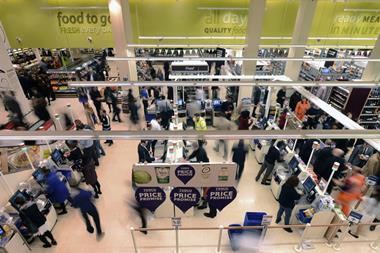
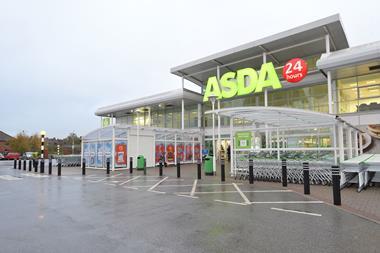
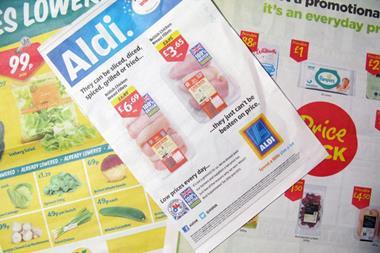
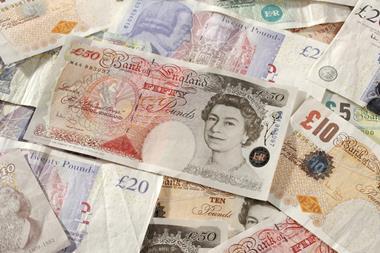
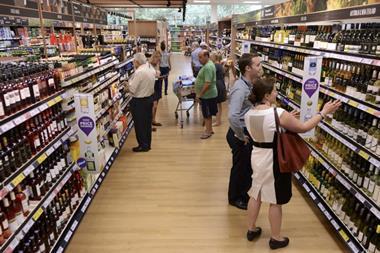







No comments yet